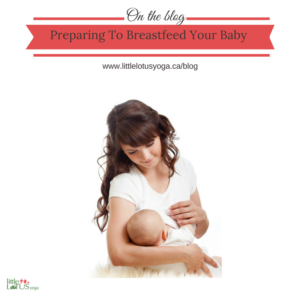According to the World Health Organization (WHO,) “breastfeeding is the normal way of providing young infants with the nutrients they need for healthy growth and development. Virtually all mothers can breastfeed, provided they have accurate information, and the support of their family, the health care system and society at large.”
 The WHO goes on to recommend that mothers exclusively breastfeed their babies up to 6 months of age, with extended breastfeeding (along with solids) up to two years of age or beyond.
The WHO goes on to recommend that mothers exclusively breastfeed their babies up to 6 months of age, with extended breastfeeding (along with solids) up to two years of age or beyond.
Pregnant women will learn about WHO’s recommendations from many different institutions and organizations. Hospitals that are certified “baby friendly” will encourage and support women to initiate breastfeeding and continue to do so after they have been discharged from the hospital. Parents will also be inundated with information from their health care providers, public health departments and from friends and family.
All of this information seems in stark contrast to the reality of breastfeeding. Initiation rates tend to be very high in hospital (sometimes over 90%) but this number drops drastically by discharge; by 6 months of age, less than 30% of mothers are exclusively breastfeeding.
Experts suspect that one of the biggest problems related to breastfeeding is the fact that it is pushed as being “normal,” but does not always come naturally. Many mothers have never seen a breastfeeding infant before conceiving, and have no real visual of what a baby looks like at the breast; this, coupled with a lack of support after discharge from hospital makes it difficult for mothers to continue breastfeeding.
There are a number of ways women and their partners can prepare themselves for breastfeeding, so that they feel well supported after the birth and better able to deal with challenges:
- Attend a breastfeeding class, or read a book about breastfeeding before you give birth: it’s important to understand the biology behind breastfeeding, and have some basic knowledge of how lactation works.
- Plan on practicing skin-to-skin: having your baby close to you for hours (and days!) after the birth will help with bonding and latching.
- Find out where to get help after the birth: many public health departments have free programs to support breastfeeding mothers.
- Find a “breastfeeding buddy”: seek out another mother who has successfully breastfed her baby, and has some knowledge about breastfeeding. Ask if you can call her if you need a supportive friend.
- Find local lactation consultants, and connect with them before the birth. Find out how much they charge, how soon you could get an appointment, and what their approach will be (you may find some lactation consultants are a better fit for you in terms of personality).
- Try to filter out all the advice that you receive – the only people best qualified to help you with breastfeeding challenges is an International Board Certified Lactation Consultant (IBCLC.) Many well-meaning doctors and nurses provide misinformation to new mothers.
Although breastfeeding may not come naturally, there are ways to prepare yourself for the challenges you may face. Try to surround yourself with supportive people who understand your goals (whether it’s 2 months of exclusive breastfeeding, or long-term breastfeeding!) Remember that being “successful” at breastfeeding is personal, and it’s your prerogative to determine what that means to you!

[…] knew better than me. I was wrong. But I had a plan! The next 6 weeks consisted of skin to skin, breastfeeding, pumping, supplementing, drinking all the fenugreek tea, eating all the oats and flax, drinking all […]